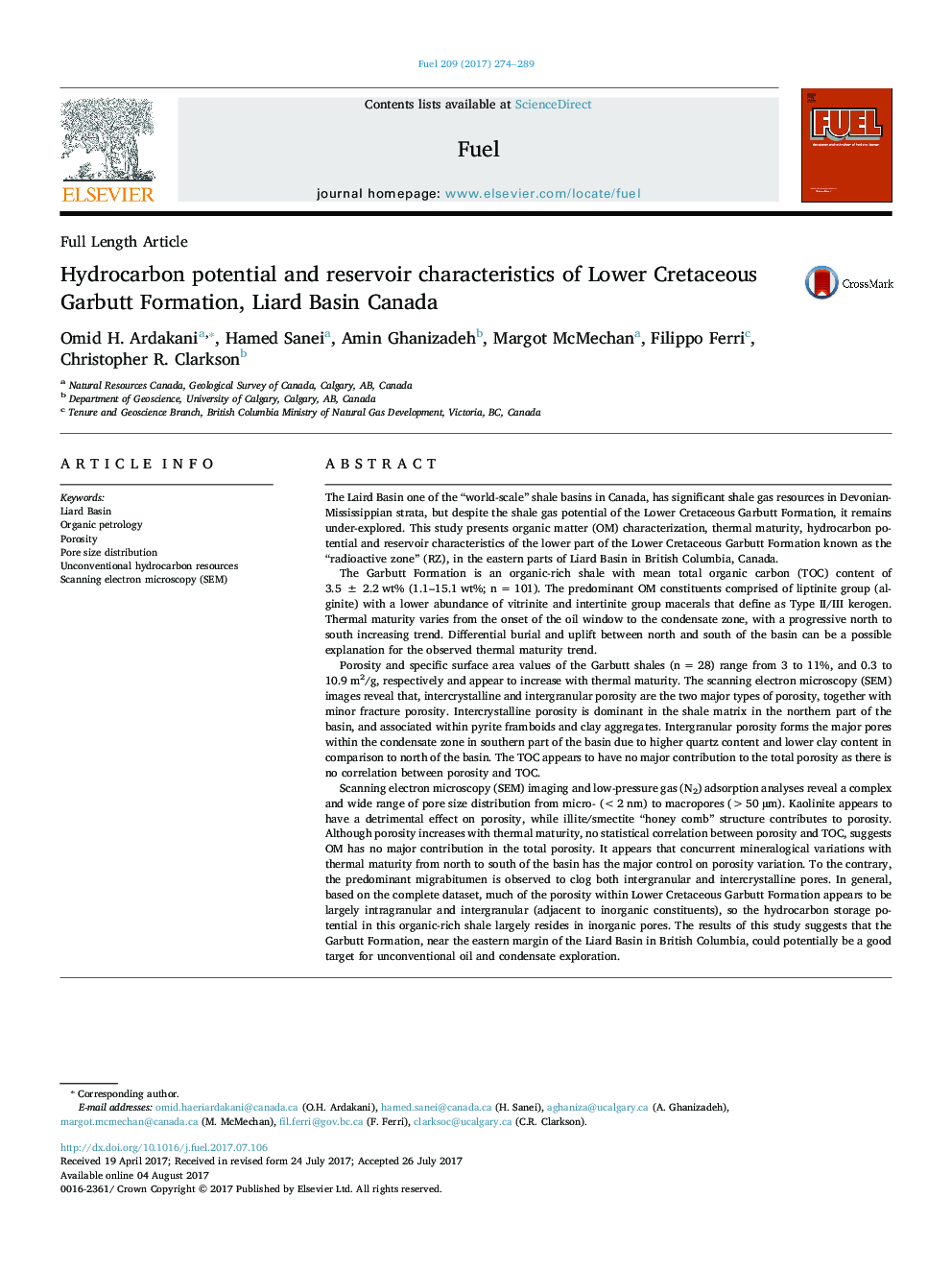| کد مقاله | کد نشریه | سال انتشار | مقاله انگلیسی | نسخه تمام متن |
|---|---|---|---|---|
| 6473877 | 1424955 | 2017 | 16 صفحه PDF | دانلود رایگان |
The Laird Basin one of the “world-scale” shale basins in Canada, has significant shale gas resources in Devonian-Mississippian strata, but despite the shale gas potential of the Lower Cretaceous Garbutt Formation, it remains under-explored. This study presents organic matter (OM) characterization, thermal maturity, hydrocarbon potential and reservoir characteristics of the lower part of the Lower Cretaceous Garbutt Formation known as the “radioactive zone” (RZ), in the eastern parts of Liard Basin in British Columbia, Canada.The Garbutt Formation is an organic-rich shale with mean total organic carbon (TOC) content of 3.5 ± 2.2 wt% (1.1-15.1 wt%; n = 101). The predominant OM constituents comprised of liptinite group (alginite) with a lower abundance of vitrinite and intertinite group macerals that define as Type II/III kerogen. Thermal maturity varies from the onset of the oil window to the condensate zone, with a progressive north to south increasing trend. Differential burial and uplift between north and south of the basin can be a possible explanation for the observed thermal maturity trend.Porosity and specific surface area values of the Garbutt shales (n = 28) range from 3 to 11%, and 0.3 to 10.9 m2/g, respectively and appear to increase with thermal maturity. The scanning electron microscopy (SEM) images reveal that, intercrystalline and intergranular porosity are the two major types of porosity, together with minor fracture porosity. Intercrystalline porosity is dominant in the shale matrix in the northern part of the basin, and associated within pyrite framboids and clay aggregates. Intergranular porosity forms the major pores within the condensate zone in southern part of the basin due to higher quartz content and lower clay content in comparison to north of the basin. The TOC appears to have no major contribution to the total porosity as there is no correlation between porosity and TOC.Scanning electron microscopy (SEM) imaging and low-pressure gas (N2) adsorption analyses reveal a complex and wide range of pore size distribution from micro- (<2 nm) to macropores (>50 µm). Kaolinite appears to have a detrimental effect on porosity, while illite/smectite “honey comb” structure contributes to porosity. Although porosity increases with thermal maturity, no statistical correlation between porosity and TOC, suggests OM has no major contribution in the total porosity. It appears that concurrent mineralogical variations with thermal maturity from north to south of the basin has the major control on porosity variation. To the contrary, the predominant migrabitumen is observed to clog both intergranular and intercrystalline pores. In general, based on the complete dataset, much of the porosity within Lower Cretaceous Garbutt Formation appears to be largely intragranular and intergranular (adjacent to inorganic constituents), so the hydrocarbon storage potential in this organic-rich shale largely resides in inorganic pores. The results of this study suggests that the Garbutt Formation, near the eastern margin of the Liard Basin in British Columbia, could potentially be a good target for unconventional oil and condensate exploration.
Journal: Fuel - Volume 209, 1 December 2017, Pages 274-289
